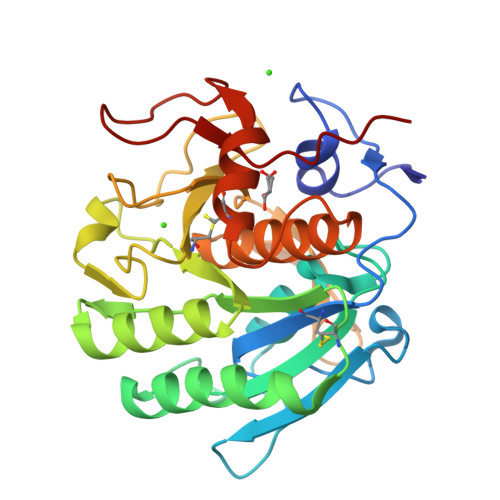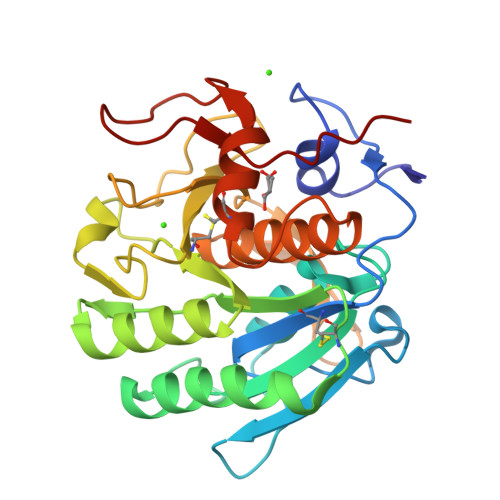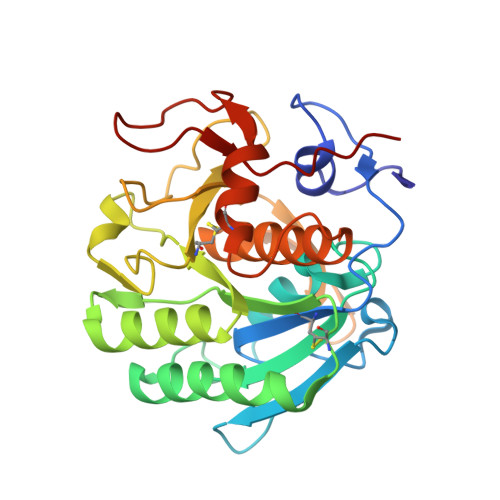High-resolution X-ray study of the effects of deuteration on crystal growth and the crystal structure of proteinase K
Chatake, T., Ishikawa, T., Yanagisawa, Y., Yamada, T., Tanaka, I., Fujiwara, S., Morimoro, Y.(2011) Acta Crystallogr Sect F Struct Biol Cryst Commun 67: 1334-1338
- PubMed: 22102227
- DOI: https://doi.org/10.1107/S1744309111031903
- Primary Citation of Related Structures:
3AJ8, 3AJ9 - PubMed Abstract:
Deuteration of macromolecules is an important technique in neutron protein crystallography. Solvent deuteration of protein crystals is carried out by replacing water (H(2)O) with heavy water (D(2)O) prior to neutron diffraction experiments in order to diminish background noise. The effects of solvent deuteration on the crystallization of proteinase K (PK) with polyethylene glycol as a precipitant were investigated using high-resolution X-ray crystallography. In previous studies, eight NO(3)(-) anions were included in the PK crystal unit cell grown in NaNO(3) solution. In this study, however, the PK crystal structure did not contain NO(3)(-) anions; consequently, distortions of amino acids arising from the presence of NO(3)(-) anions were avoided in the present crystal structures. High-resolution (1.1 Å) X-ray diffraction studies showed that the degradation of PK crystals induced by solvent deuteration was so small that this degradation would be negligible for the purpose of neutron protein crystallography experiments at medium resolution. Comparison of the nonhydrogen structures of nondeuterated and deuterated crystal structures demonstrated very small structural differences. Moreover, a positive correlation between the root-mean-squared differences and B factors indicated that no systematic difference existed.
Organizational Affiliation:
Research Reactor Institute, Kyoto University, Ashashironishi 2, Kumatori, Osaka, Japan. chatake@rri.kyoto-u.ac.jp


















